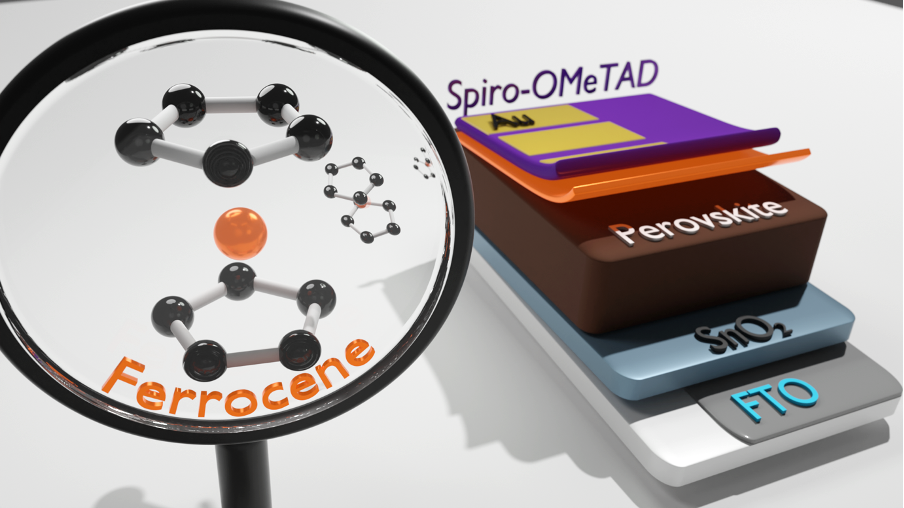A UK research group led by the University of Surrey has fabricated a perovskite solar cell that integrates a ferrocene co-mediator interlayer at the interface between the spiro-OMeTAD hole transport layer (HTL) and the active perovskite material.
“Perovskite solar cells are at the forefront of next-generation photovoltaic technologies. We are proud to work with some of the best research teams in perovskite photovoltaics to tackle some key challenges for the commercialization of this low-cost and high-efficiency photovoltaic product,” the research's corresponding author, Wei Zhang, told pv magazine. He further noted that the migration of lithium is critical in the degradation of spiro-OMeTAD-based devices, which is accelerated at higher temperatures, leading to the rapid degradation of the perovskite.
The scientists described ferrocene as a sandwich structured material that is highly stable and can be used as a low-cost transition metal complex. “Ferrocene has previously been incorporated into dye-sensitized solar cells (DSSCs) as a redox mediator, before being identified as an effective co-mediator when combined with inorganic redox shuttles enabling fast regeneration of oxidized sensitizers,” they specified. “When applied in organic photovoltaics (OPV) the addition of ferrocene has also been shown to improve carrier mobility and suppress recombination via the volatility of ferrocene and the ability to bridge between organic molecules, ordering the structure.”
“The application of metallocenes in perovskite solar cells is quickly becoming an exciting avenue for tackling the key challenges of perovskite solar cells including performance and stability,” researcher Thomas Webb said.
According to their findings, the addition of ferrocene at the perovskite/spiro-OMeTAD interface rendered the lithium ions immobile, preventing them from migrating within the perovskite layer and thus significantly reducing their aggregation at the interface, where they can cause damage. This was achieved without compromising the perovskite cell efficiency. In addition, the diffusion of ferrocene into the HTL helped oxidize spiro-OMeTAD, improving its carrier transporting properties.
The solar cell developed with the proposed technique achieved a power conversion efficiency of 23.45%. It was also able to retain 70% of the initial efficiency after 1,250 hours stored at 60 C and 50% relative humidity.
The academics described the cell in the paper A Multifaceted Ferrocene Interlayer for Highly Stable and Efficient Lithium Doped Spiro-OMeTAD-based Perovskite Solar Cells, published in Advanced Energy Materials. The research team includes scientists from Imperial College London, the University of Surrey, the University of Nottingham, research institute UCL, Switzerland-based Fluxim AG, and London South Bank University. “This work offers insights into the tendency of ferrocene to bind and immobilize lithium ions by means of the cyclopentadiene rings, such immobilization has wider applications in other lithium-containing devices such as batteries,” research co-author, Saif Haque said. “Tackling the stability of perovskite solar cells is essential for any future commercialization. In this work, we show that the inclusion of ferrocene in the solar cell device structure can improve stability. These insights could prove valuable in a wide range of practical applications beyond solar cells.”
This content is protected by copyright and may not be reused. If you want to cooperate with us and would like to reuse some of our content, please contact: editors@pv-magazine.com.




4 comments
By submitting this form you agree to pv magazine using your data for the purposes of publishing your comment.
Your personal data will only be disclosed or otherwise transmitted to third parties for the purposes of spam filtering or if this is necessary for technical maintenance of the website. Any other transfer to third parties will not take place unless this is justified on the basis of applicable data protection regulations or if pv magazine is legally obliged to do so.
You may revoke this consent at any time with effect for the future, in which case your personal data will be deleted immediately. Otherwise, your data will be deleted if pv magazine has processed your request or the purpose of data storage is fulfilled.
Further information on data privacy can be found in our Data Protection Policy.